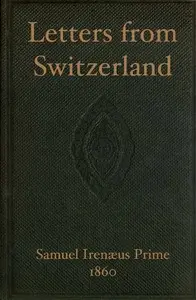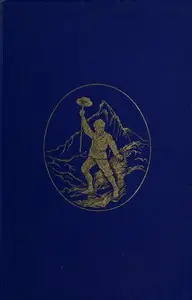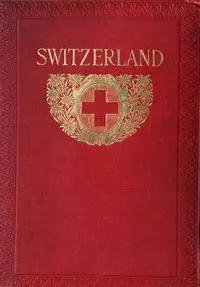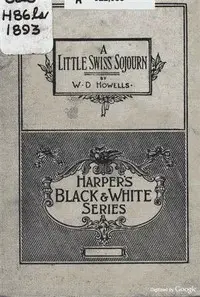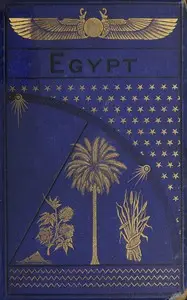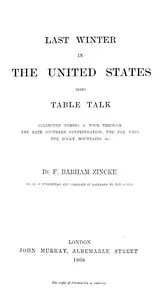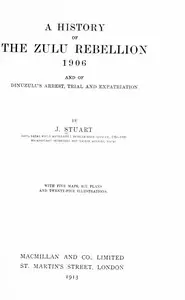"A Walk in the Grisons: Being a Third Month in Switzerland" by F. Barham Zincke is a 19th-century travelogue that recounts the author's adventures in the Grisons area of Switzerland as part of a series about Switzerland. Zincke aims to paint a vibrant picture of the scenery, culture, and society he sees in this mountainous region. The story starts with Zincke's arrival in Interlaken and his plans for the trip, including hiring a porter, Henri Leuthold. He thinks about the difficulties posed by the weather, the land's features, and the Swiss peasants' dedication to working hard to acquire land. This beginning sets the scene for a close and detailed exploration of the Swiss landscapes and the people who live there, capturing a sense of respect for nature and understanding for social interactions.
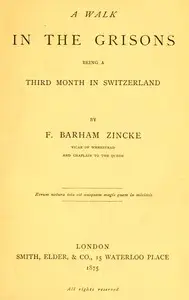
A walk in the Grisons : $b Being a third month in Switzerland
By F. Barham (Foster Barham) Zincke
Embark on a journey through the Swiss Grisons in the 1800s, where stunning landscapes meet the hardworking spirit of the local people.
Summary
About the AuthorFoster Barham Zincke was a clergyman, a traveller, and an antiquary.
Zincke was born on 5 January 1817 at Eardley, a sugar estate in Jamaica. He was the third son of Frederick Burt Zincke, of Jamaica, by his wife, Miss Lawrence, a descendant of Henry Lawrence, president of Oliver Cromwell's council. He was fourth in descent from Christian Friedrich Zincke, the miniature and enamel painter. He entered Bedford School in 1828 and matriculated from Wadham College, Oxford, on 5 March 1835, graduating B.A. on 18 May 1839. He rowed in the Oxford boat at Henley in the same year. In 1840 he was ordained by Charles Richard Sumner, bishop of Winchester, to the curacy of Andover, and in 1841 he became curate of Wherstead and Freston, near Ipswich. In 1847, on the death of the vicar, George Capper, he was appointed vicar of Wherstead on the presentation of the Crown. Soon afterwards he began to contribute to Fraser's Magazine and the Quarterly Review, and in 1852 published Some Thoughts about the School of the Future, in which he criticised with some severity the system of education pursued in the universities and public schools. Shortly afterwards he was appointed one of the queen's chaplains.
Foster Barham Zincke was a clergyman, a traveller, and an antiquary. Zincke was born on 5 January 1817 at Eardley, a sugar estate in Jamaica. He was the third son of Frederick Burt Zincke, of Jamaica, by his wife, Miss Lawrence, a descendant of Henry Lawrence, president of Oliver Cromwell's council. He was fourth in descent from Christian Friedrich Zincke, the miniature and enamel painter. He entered Bedford School in 1828 and matriculated from Wadham College, Oxford, on 5 March 1835, graduating B.A. on 18 May 1839. He rowed in the Oxford boat at Henley in the same year. In 1840 he was ordained by Charles Richard Sumner, bishop of Winchester, to the curacy of Andover, and in 1841 he became curate of Wherstead and Freston, near Ipswich. In 1847, on the death of the vicar, George Capper, he was appointed vicar of Wherstead on the presentation of the Crown. Soon afterwards he began to contribute to Fraser's Magazine and the Quarterly Review, and in 1852 published Some Thoughts about the School of the Future, in which he criticised with some severity the system of education pursued in the universities and public schools. Shortly afterwards he was appointed one of the queen's chaplains.

